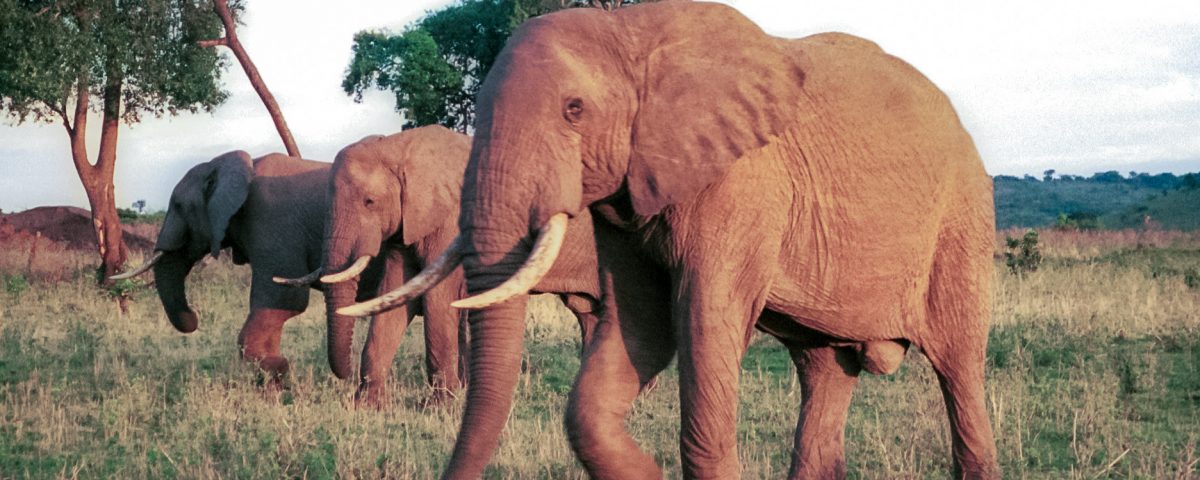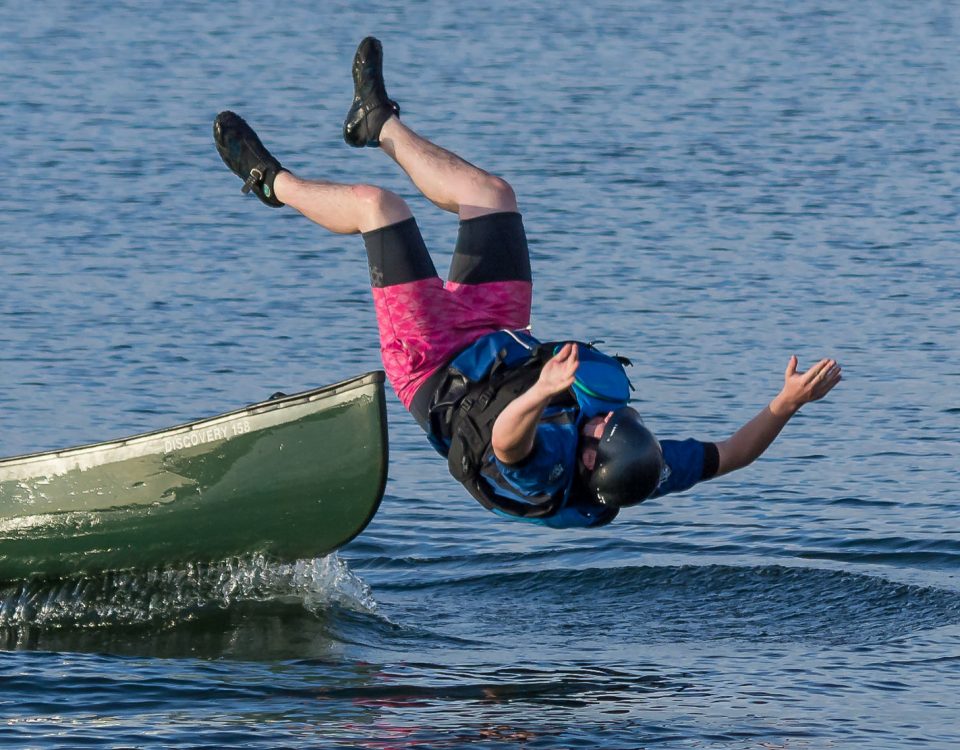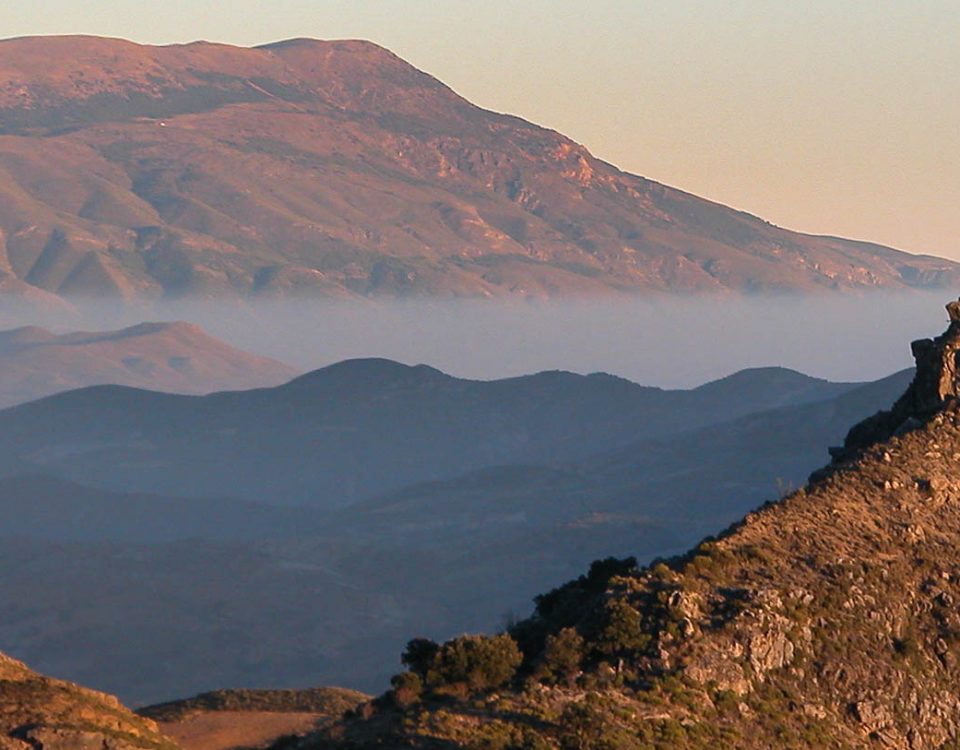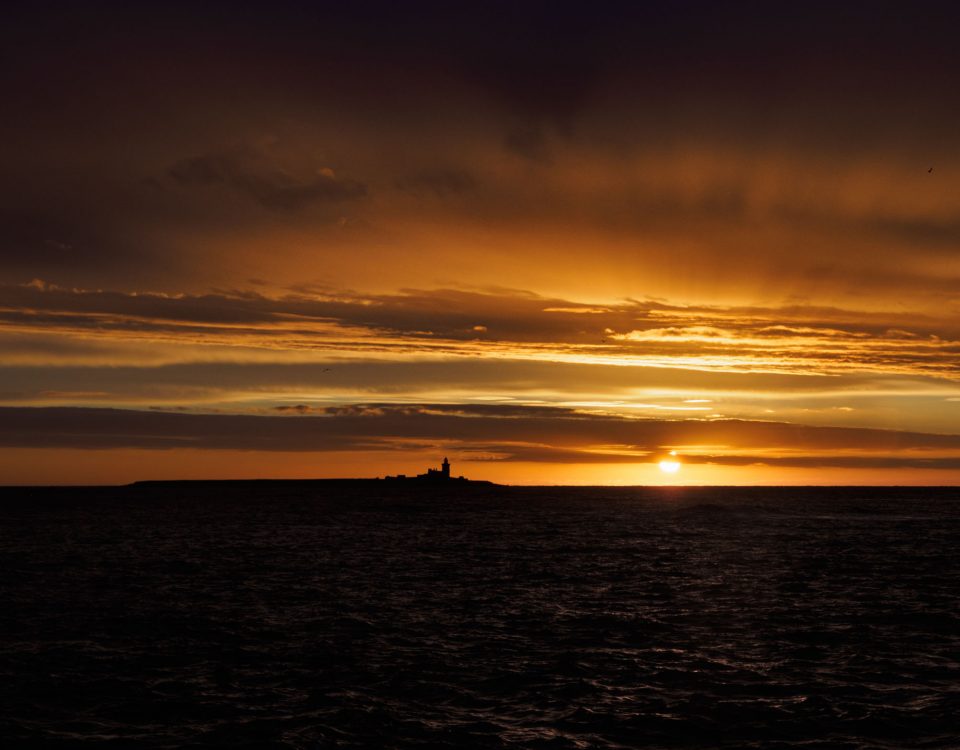
Professional Photographer – Are you Thinking About It?
2nd April 2018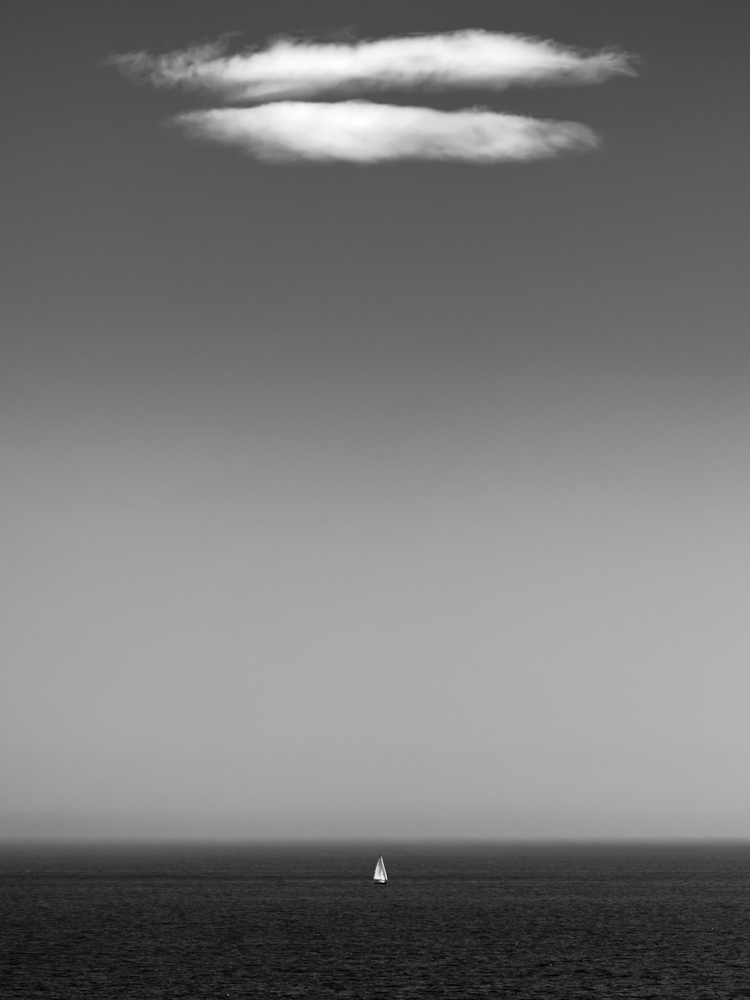
Planning a shot is important, but sometimes the unplanned works too
8th May 2018I find photography Zen-like. Concentrating on the subject, composing the shot and making fine adjustments to the settings is totally absorbing. It distracts me from the troubles of the world. I also love the experience of encountering creatures in their natural habitat, something I can find spiritual. Putting together those two elements together – wildlife photography – should be my idea of bliss. But, photography can detract from the experience of an encounter with wildlife. Even on a photo-shoot, there are times to put the camera down and just experience life.
Wildlife photography and the art of leaving the camera behind.
It’s sometimes important to put the camera down and just be in the moment. I’ve been lucky enough to stroll through the African bush with a Samburu guide, camped in the shadow of Kilimanjaro in close proximity to a pride of lions, stopped the engines of a small boat while a whale circled and swam beneath me, dropped the sails on a yacht to stop and watch a kingfisher dive into the water, seen elephant and rhino roam the savannah, climbed a mountain and come face-to-face with a stag, watched golden eagles sore on the Isle of Skye, and scuba dived on coral reefs off Zanzibar and Australia. On most of those occasions, I didn’t have a camera with me.

Elephant caught on Kodachrome 35mm using an Olympus Mju compact camera
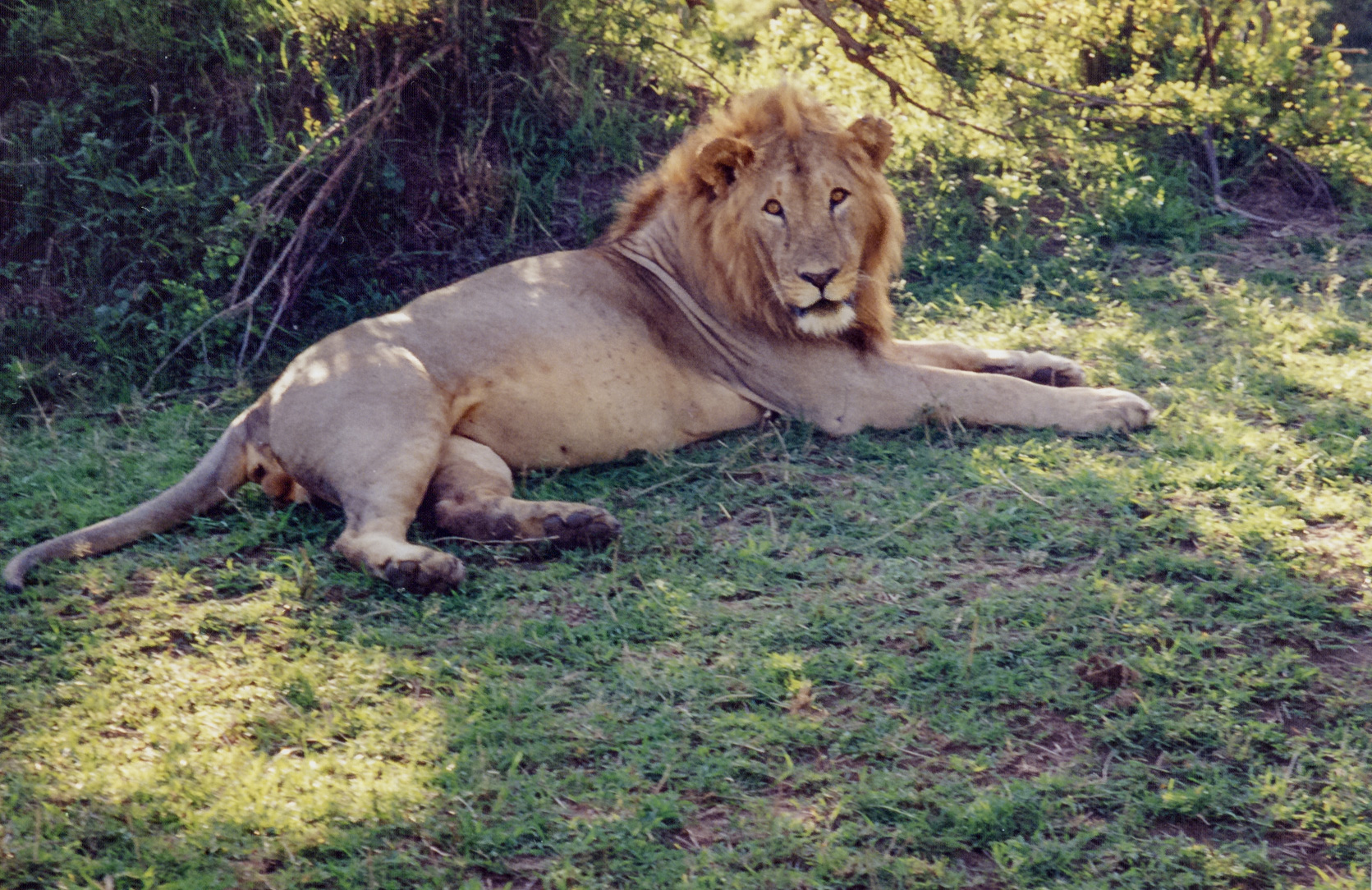
Lion, also photographed in the Masai Mara in 1999 using an Olympus Mju compact film camera, perhaps not the ideal camera for wildlife photography, but it recorded the event for me and looking at the images brings back happy memories. The simplicity of the camera gave me more space to enjoy the experience of being there.
I don’t understand people who go to a concert and watch it through the screen of their mobile phone. Likewise, seeing a lion in its natural habitat is best experienced without a lens between you and it. Take a photo, but put the camera down too.
When you do pick the camera up…
Do I consider myself a wildlife photographer? Not really, although I really do enjoy capturing images of wildlife. True wildlife photographers spend huge amounts of time studying animal behaviour. They also tailor their equipment to achieve first-class shots. It’s an expensive, technical and time-consuming hobby. I would need to put in a lot more work, money and time before I awarded myself that title.
That doesn’t mean I don’t ever photograph wildlife. Where I live now, on the coast in Northumberland, there is a scattering of islands giving good opportunities to get up close to sea birds. This is great as, besides taking photographs and seeing wildlife, I love being on the sea.
Capturing reasonably good images of wildlife is achievable with relatively basic equipment and by learning a few techniques. That is something that more of my clients seem to be asking me to teach them. It’s a treat for me as it often means trips out on the water.
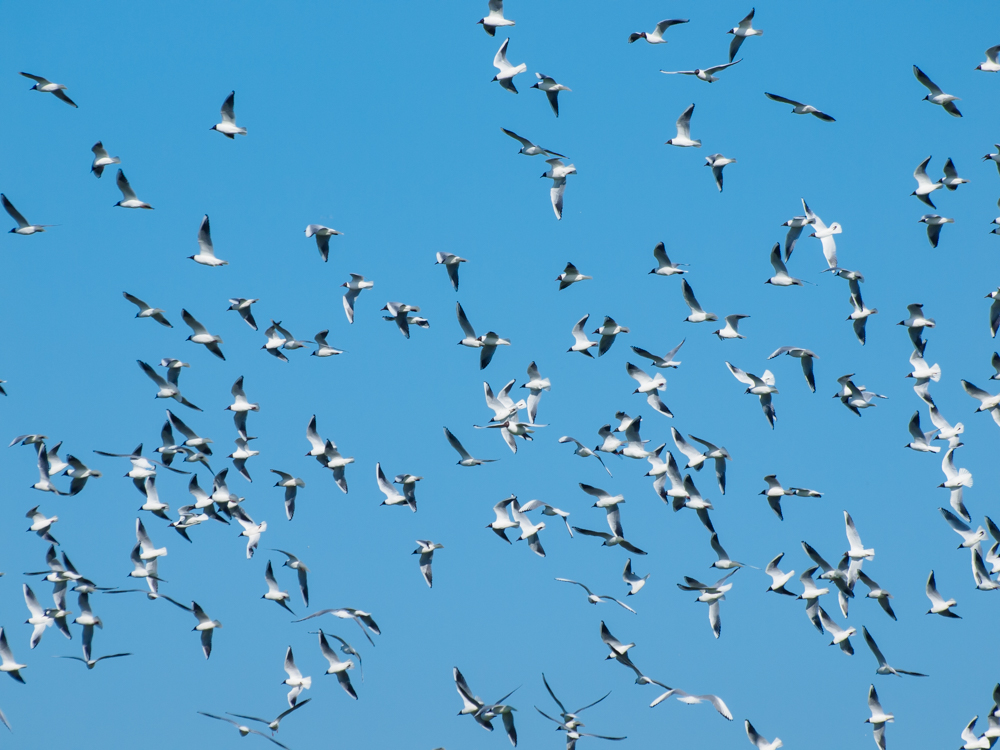
When I do take my camera…
In my home town is Puffin Cruises. If you are ever in this neck of the woods, you should try them. They have a converted fishing trawler and a former lifeboat. You’ll see from the water a whole array of sea birds that nest on Coquet Island, as well as the huge colony of grey seals that live on its far side. You may get to photograph dolphin too.
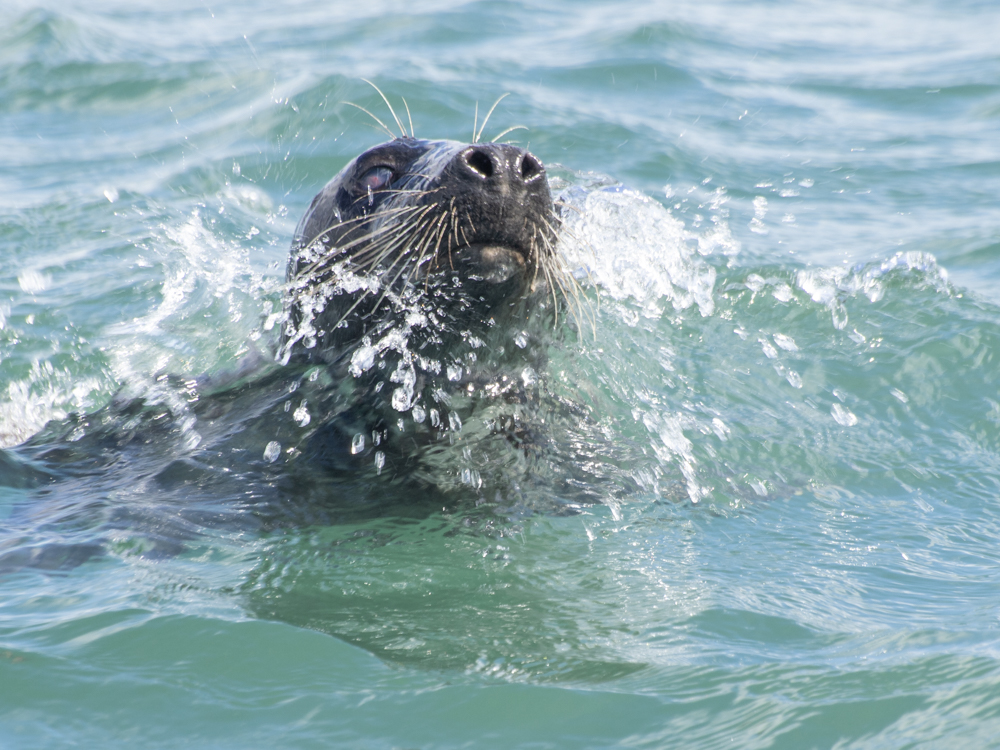
During the summer, you are guaranteed to see puffin.
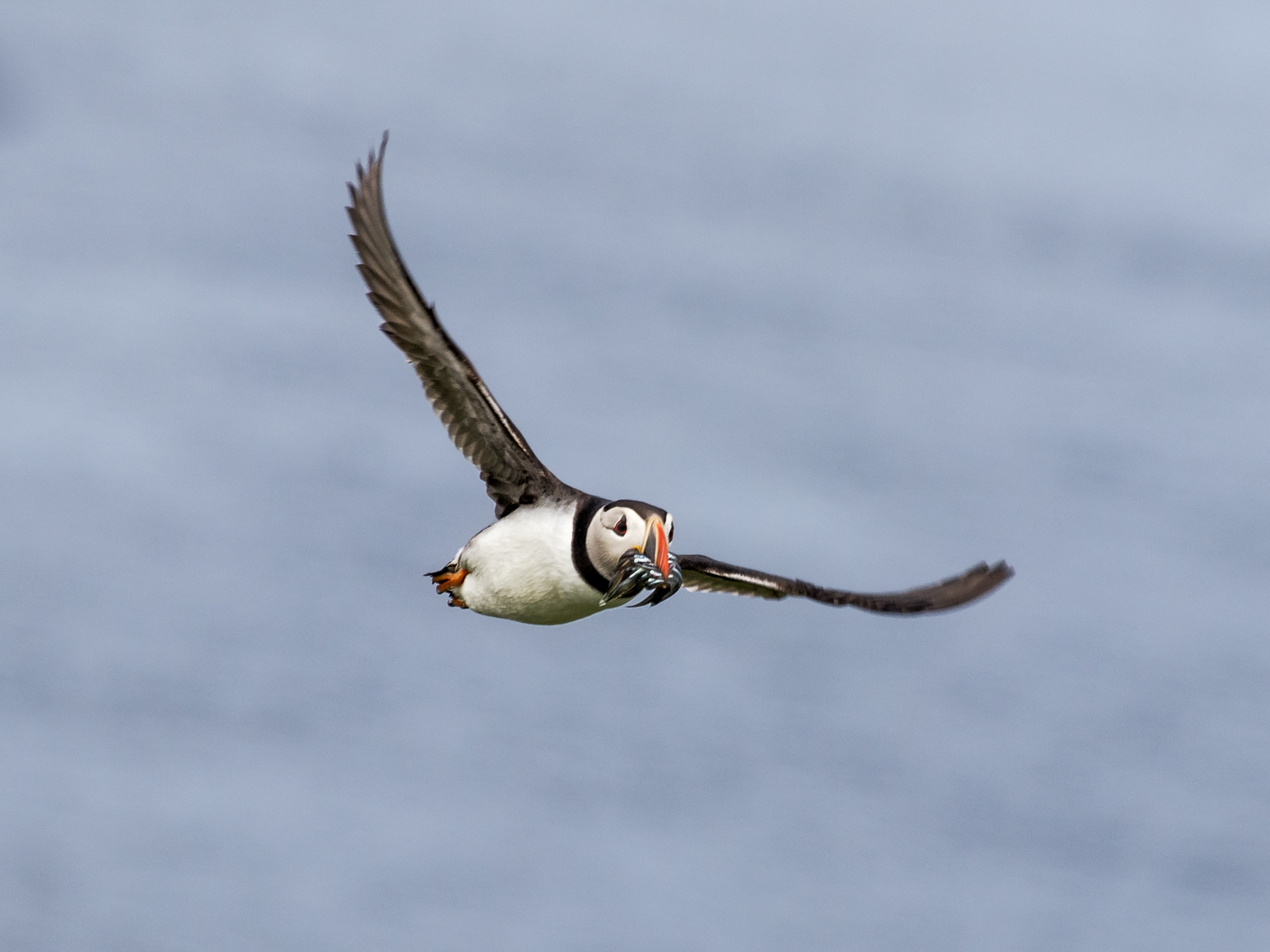
Sand Eels in Flight
Seascapes on a Puffin Cruise
Being at sea offers excellent photographic opportunities and not just of wildlife. Apart from seeing the puffin, you’ll get some close-up views of the Lighthouse on Coquet Island. The trip is great value at £10 per head for adults.
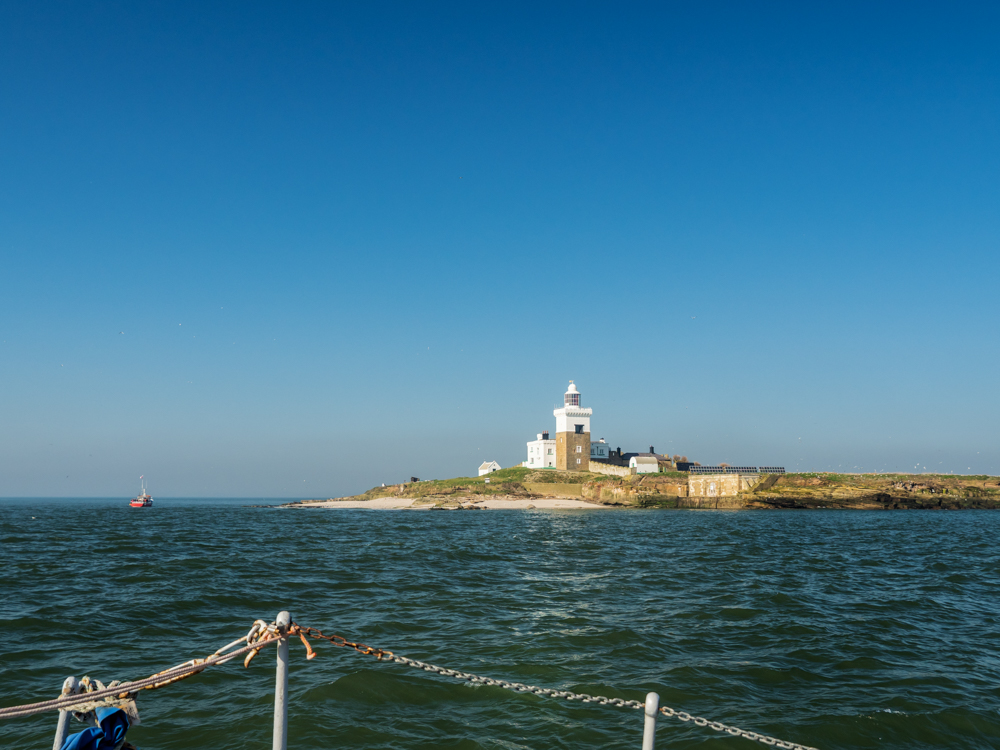
Photographing The Farne Islands
If you want to get very close to the sea birds, then a trip to the Farne Islands is worth considering. A more intense trip than the Puffin Cruise, it is worth the £70 in fees – if you can cope with the noise and smell of guano from thousands of birds. That money pays for the boat ride and landing charge made by the National Trust (the landing fee is waived for members). You’ll spend 5 hours between Staple Island and Inner Farne. Shorter trips to just one of these Islands are available too. I have just booked a day again with Billy Shiel.
Each visit I learn more and improve on the images I took the year before. I don’t take a fraction of the kit I carried on my first visit and I don’t fire the shutter as much, knowing what images will work and what won’t. I always take time to speak with the excellent resident wardens and learn a lot from them.
I am planning another trip to the Farne Islands in a couple weeks. Equipped with the knowledge of where to stand to get the best shots, what settings I should use on my cameras and what’s not worth shooting, I am hoping for another improvement on the previous years’ photographs. Photographers can and should always improve their techniques and their images.
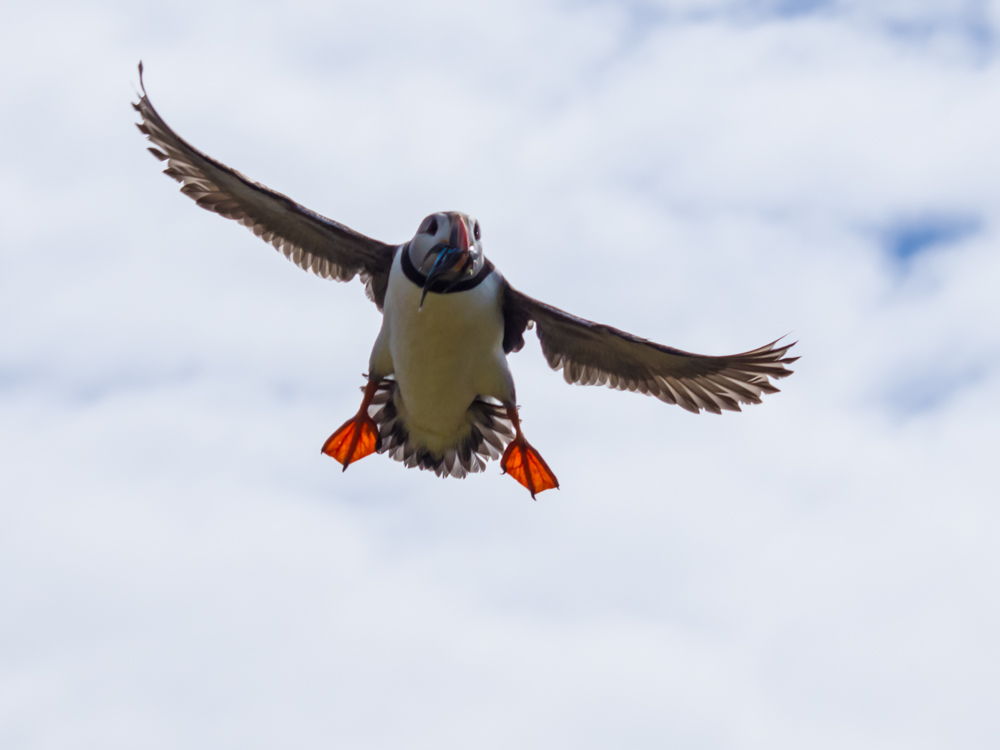
OLYMPUS DIGITAL CAMERA
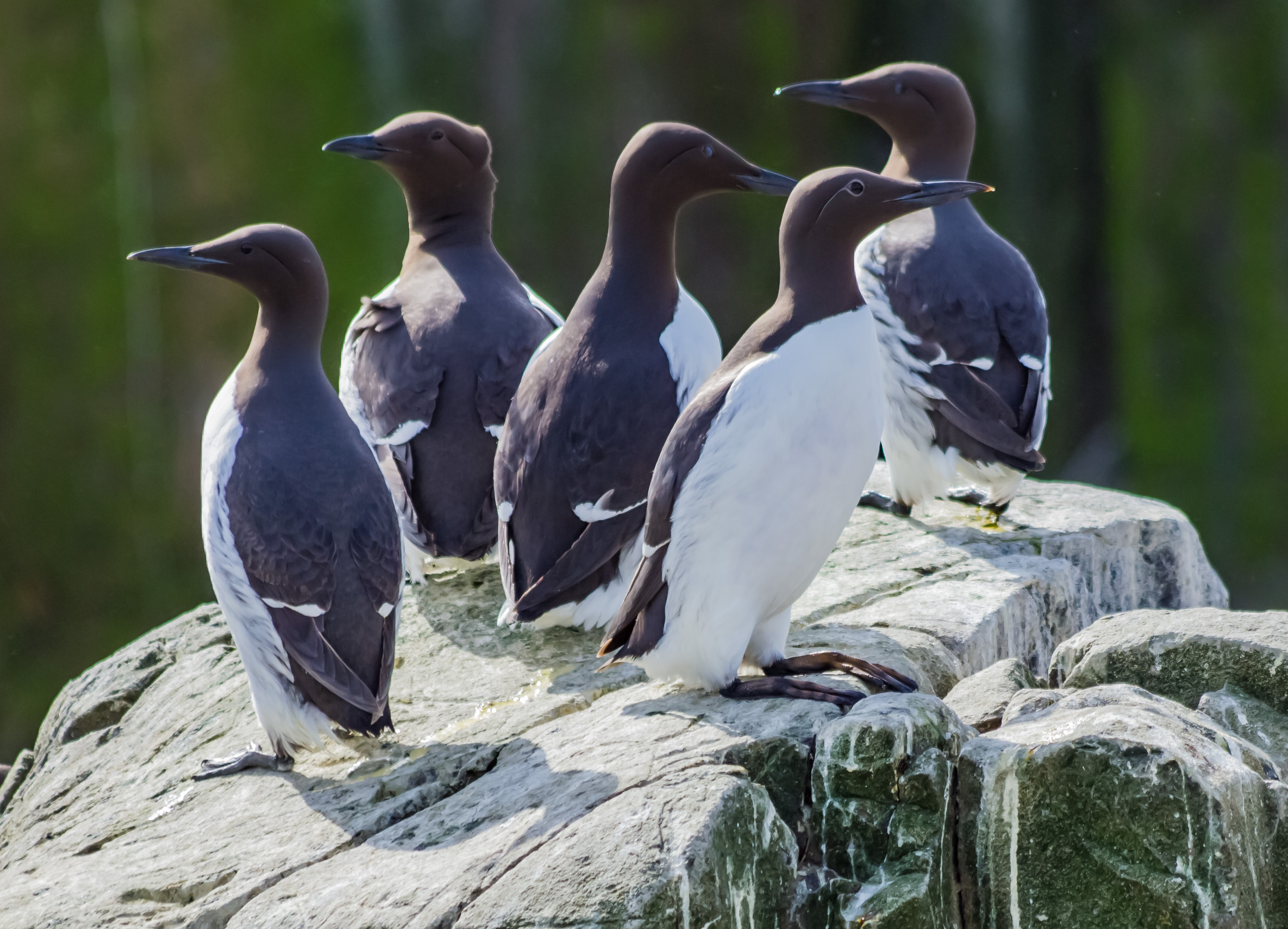
Guillemot

Razorbill
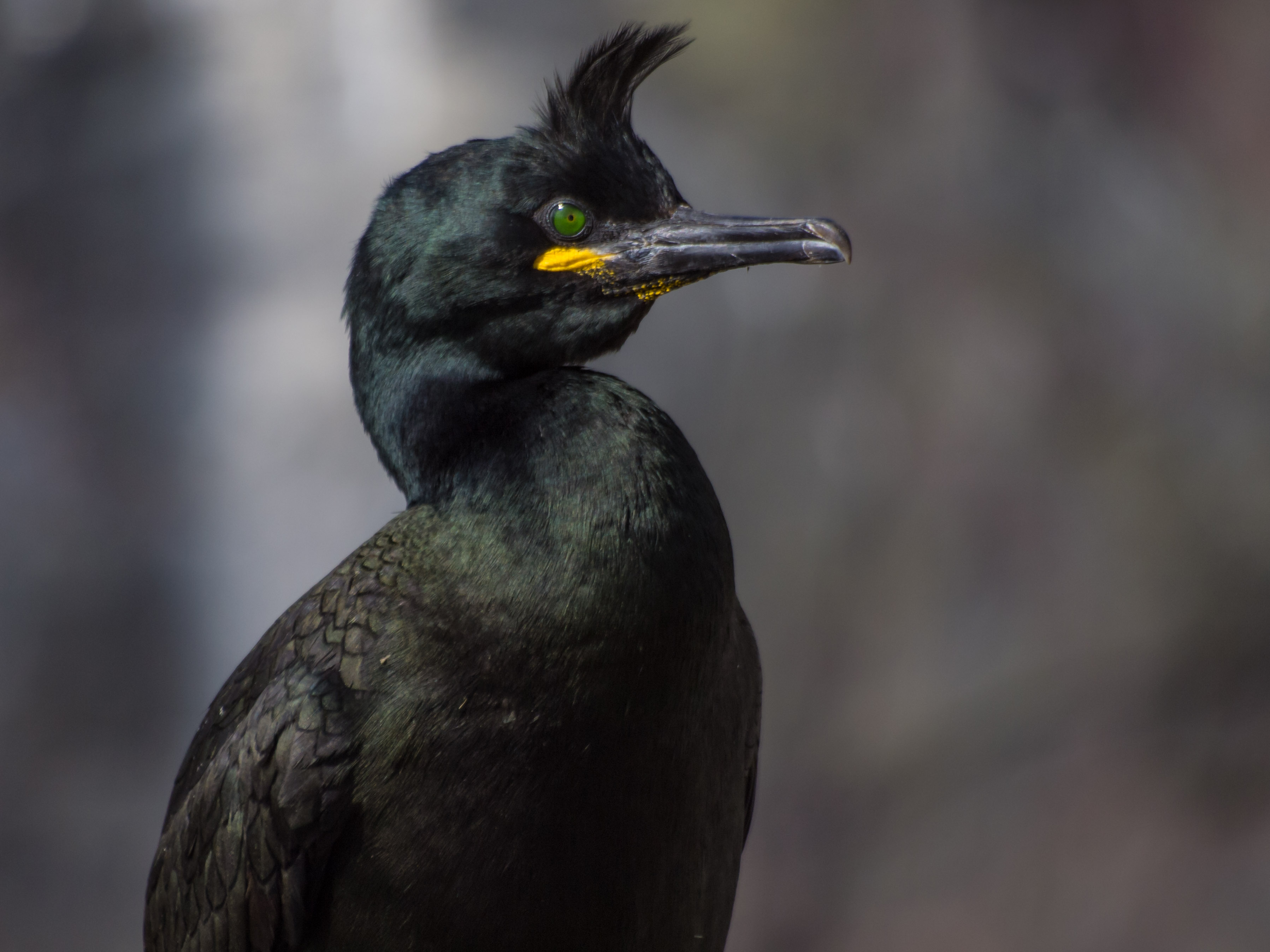
OLYMPUS DIGITAL CAMERA
If you fancy a guided trip to the Farnes or on a Puffin Cruise, or even a pre-trip lesson, give me a call.

